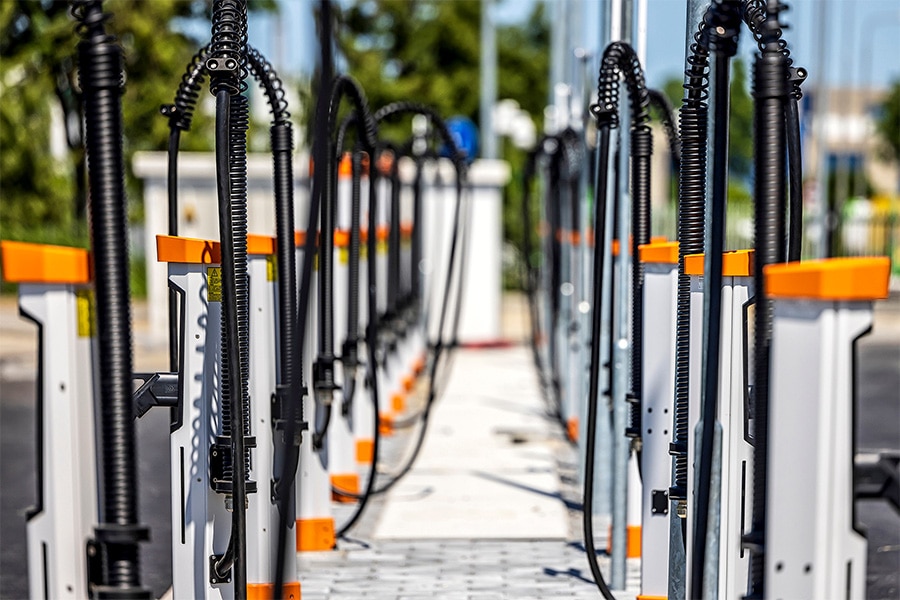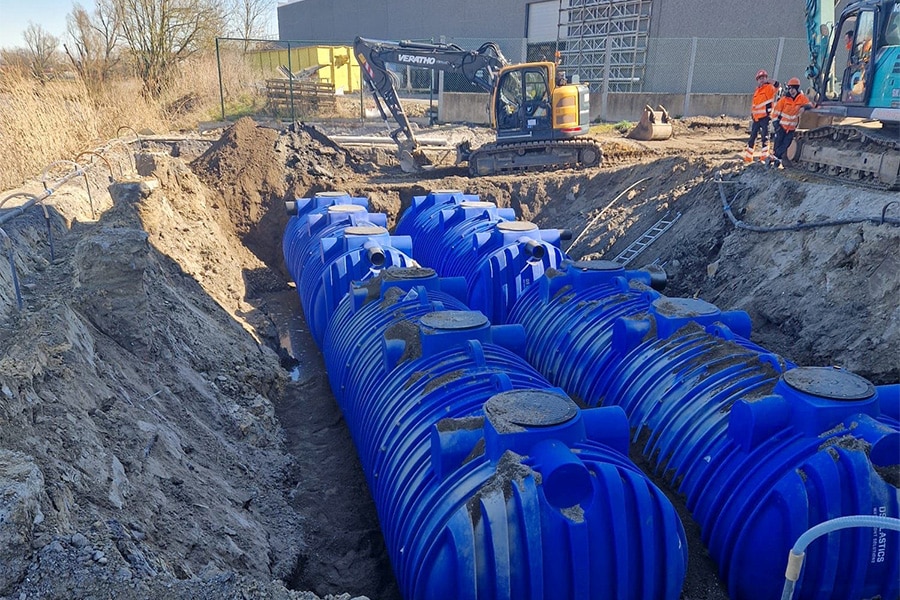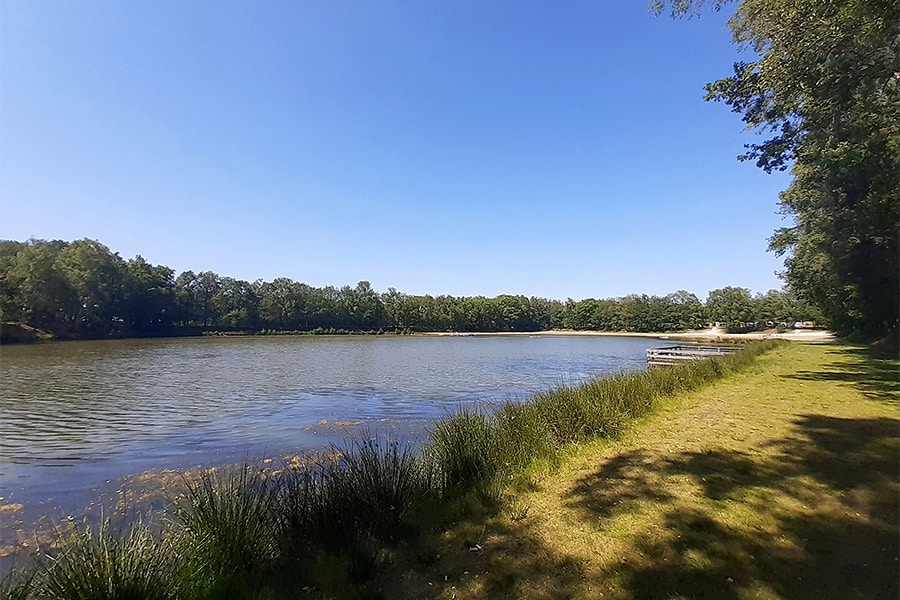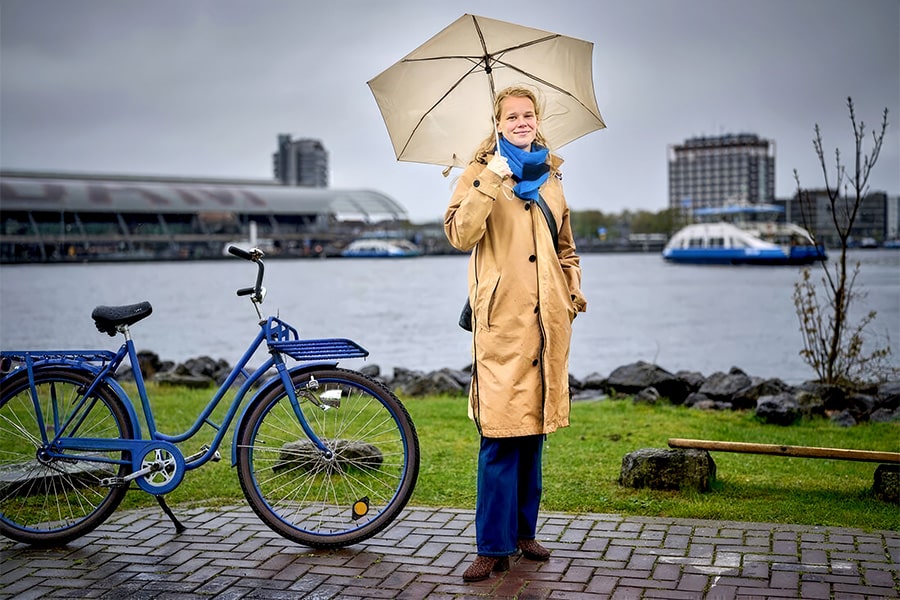
World's largest heavy equipment loading dock
Sustainably generated, smartly charged
On September 28, none other than King Willem-Alexander opened the world's largest fast charging plaza for heavy construction equipment and electric trucks. WattHub is a development of construction combination Mekante Diek in cooperation with Betuwewind and initially intended for the emission-free task for project Dijkversterking Tiel-Waardenburg. The unique set-up makes the fast charging plaza also accessible to others and, given the dynamic tariffs, extremely interesting.
WattHub originated from an ambitious client Waterschap Rivierenland, begins Gerben van den Berg, director of WattHub. "They put the tender for the dike reinforcement between Tiel and Waardenburg on the market with the ambition to carry it out almost emission-neutral. Naturally, all kinds of contractors tendered for it, but Mekante Diek, consisting of Ploegam, Dura Vermeer and Van Oord, had the winning concept. Then the question quickly arose, how are we going to charge all that equipment? Because there wasn't enough power available. At some point, the combination got into talks with Betuwewind and was simply asked if they might be able to help supply power with the three local windmills in Geldermalsen. And so it happened."

42 smart charging stations
WattHub was initially set up as a venture to meet the demand of the dike reinforcement project, but pretty soon the ambition to operate it commercially emerged, Gerben knows. "Since June this year, Mekante Diek's electric equipment has been charged at the charging station every day, and since August third parties have also been welcome. The capacities needed by the construction consortium in four years is about 7% of the available capacity provided by the three wind turbines (10 MW). So there is plenty of room for third parties." The first parties have already come forward, according to Gerben. "The charging plaza has 42 smart charging stations, including 36 DC chargers with a charging capacity of up to 400 kW and 6 AC charging stations for battery containers or older electric equipment, for example."
Solar Park
Currently, WattHub gets its power from windmills. "So when there is no wind, there is no power," Gerben acknowledges. "On average, there are between seventeen and forty windless days a year in our country. Then, of course, things get a little more exciting. We are therefore in preparation to connect the neighbor's solar farm, good for a capacity of 9.5 MW and also have a grid connection from Liander as a backup. In the summer we are allowed to take three MW from the grid 24/7 and in the winter period only between 11 p.m. and 6 a.m. We can always take the power that Betuwewind provides, so it does not go into the grid and there is no grid congestion."
Dynamic rates
Because WattHub is largely dependent on natural resources, they charge dynamic rates. Gerben: "Our credo is therefore 'sustainably generated, smartly charged'. We are the only charging station in the Netherlands that works with flexible pricing and try to charge equipment at those times when the costs are as low as possible. We pass this on one-to-one. In addition, the customer pays a fee for the use of the charging station. We therefore work as much as possible with a reservation module for a guaranteed spot and capacity." Should a third party not have a WattHub charging card, they will still be allowed, but the smart charging will be cancelled and a flat rate will be charged.
WattHub's ambition is to establish several fast-charging plazas across the country. "There is a lot of demand in the market. There will be a new holding structure, allowing WattHub to stand on 'its own feet' and invest in new locations. This is always done in cooperation with local parties and preferably with a local wind cooperative. Wind is a more constant source and also present at night."



